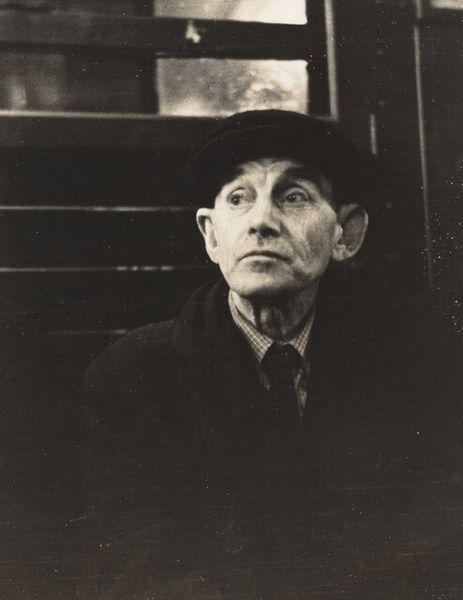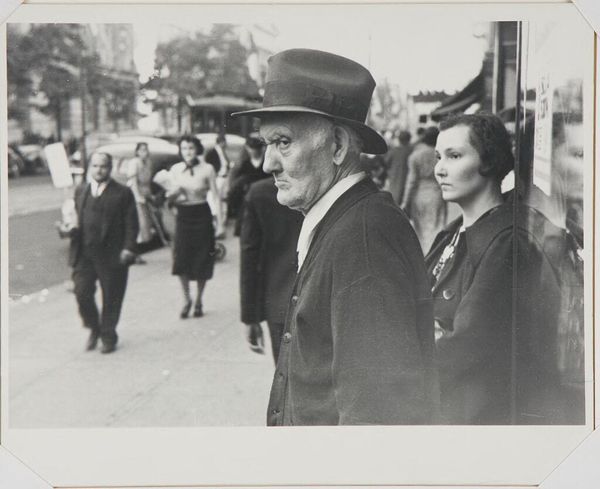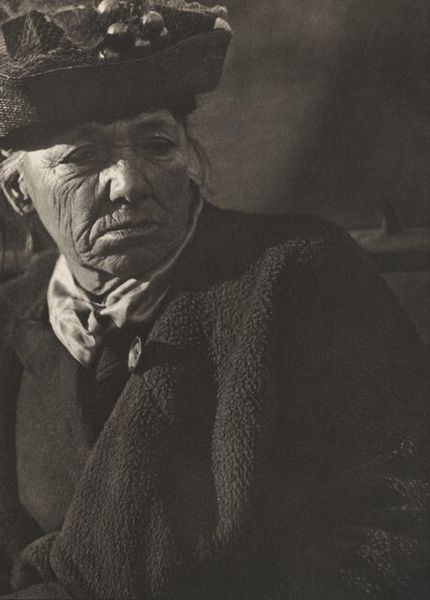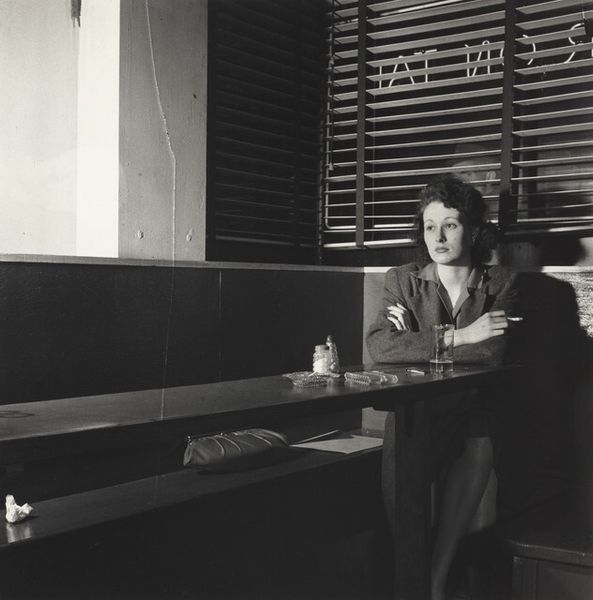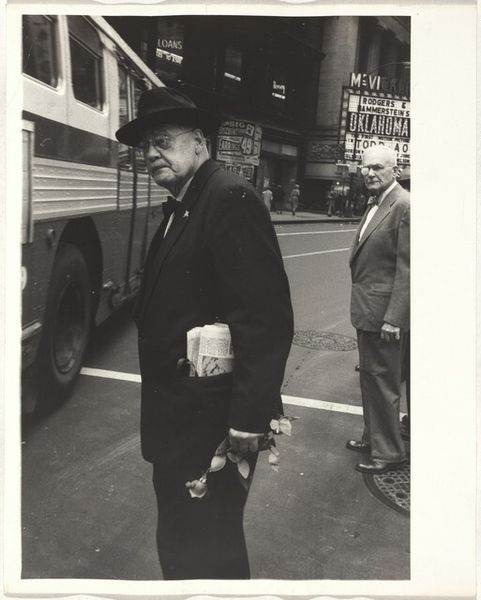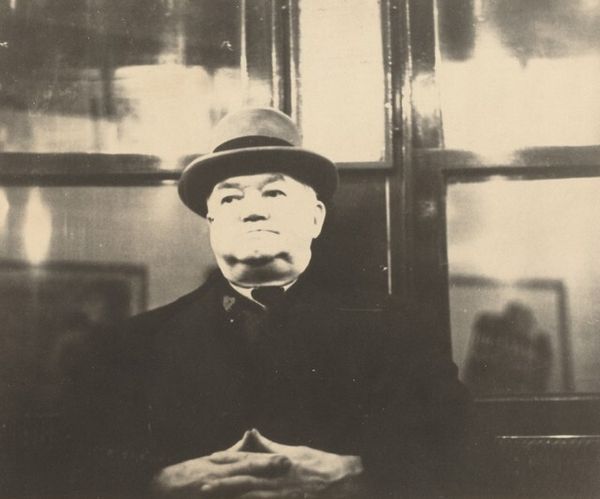
photography
#
portrait
#
photography
#
monochrome
#
realism
#
monochrome
Dimensions: image: 42.7 x 34.7 cm (16 13/16 x 13 11/16 in.) sheet: 43.4 x 35.4 cm (17 1/16 x 13 15/16 in.) mount: 50.4 x 40.5 cm (19 13/16 x 15 15/16 in.)
Copyright: National Gallery of Art: CC0 1.0
Editor: Here we have "Lady in Black," a photograph dating to around 1960, attributed to Jim Steinhardt. The monochrome palette creates an interesting sense of depth. What’s striking to me is the almost palpable weight of her attire, like she is sinking. How would you interpret this work? Curator: The labor involved in producing the materials of the subject's clothing, the processes and locations – sheep farms, textile mills, tailors' workshops, furriers - becomes significant. How are these industries represented or obscured in the final image? We might consider how the photographic process itself - camera manufacture, film development – contributes to the representation of this subject. What social and economic relations are being revealed, and simultaneously hidden, by the act of producing this image? Editor: So you're saying that the materials, the photograph itself, are like stand-ins for all the workers involved in creating those goods? The focus shifts from the subject to the unseen hands? Curator: Precisely. What statement might be made, albeit subtly, regarding labor, luxury, and social status in the photograph’s own time period? Consider this image against the backdrop of consumer culture – what is being consumed, and at what cost? Editor: It does make you think about what we’re not seeing…the global supply chains embedded in what looks like a simple portrait. That brings new weight to that phrase. Thanks! Curator: Absolutely, and conversely, perhaps those production networks impart dignity, giving worth to a garment when otherwise we only perceive the elite.
Comments
No comments
Be the first to comment and join the conversation on the ultimate creative platform.


